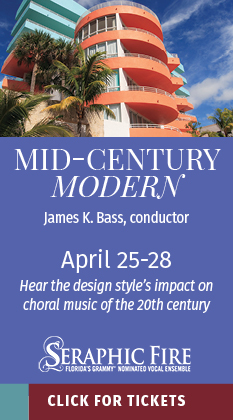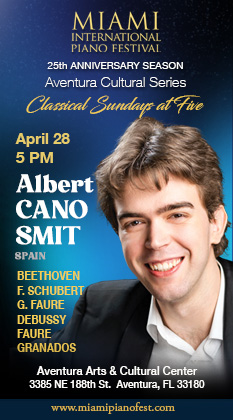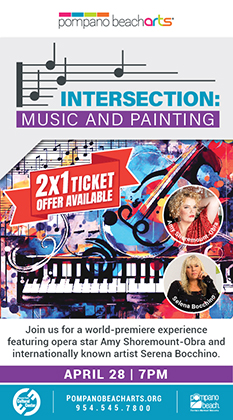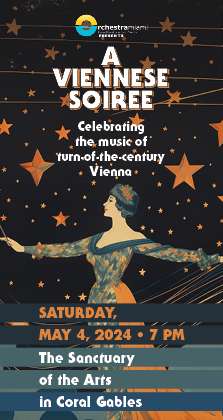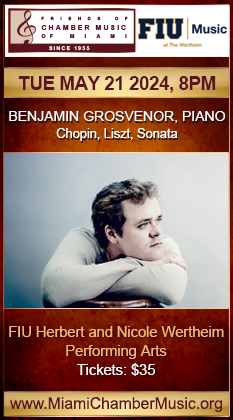New World stream revisits American music
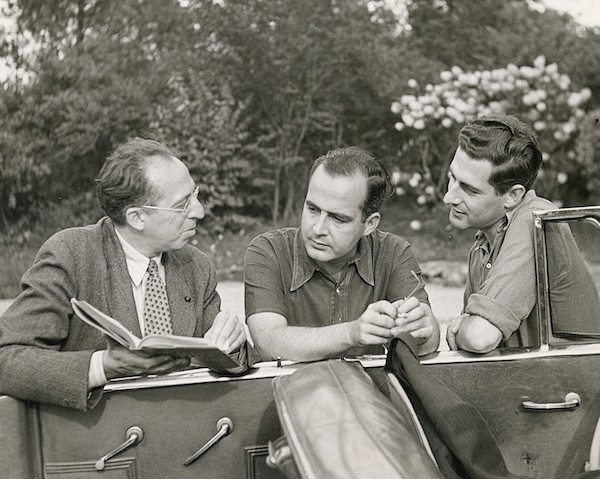
The New World Symphony is devoting its January webcasts to composite programs of highlights from concerts performed during recent seasons.
On Saturday night “Sounds of America” offered a sampling of works by American composers spanning diverse genres and compositional idioms. A movement from a Dvořák symphony formed the 57 minute webstream’s coda.
Jessie Montgomery is one of the current era’s most widely played composers. Starburst, a three-minute vignette for string orchestra written in 2012, amply illustrated her creative ingenuity. Gleaming and robust figurations suggest the fracturing of constellations in this alluring fusion of minimalist strokes and Coplandesque Americana. Conducting fellow Chad Goodman drew robust and precise articulation from the string players and illuminated the score’s vivid imagery and sense of wonder.
Samuel Barber’s Second Essay for Orchestra (1942) is one of the composer’s finest works. While Barber’s signature lyricism is definitely present, there is greater sinew and granite-like heft and propulsion in this score. Barber’s rich instrumental coloration is a virtual textbook on finely crafted orchestration. Former New World conducting fellow Teddy Abrams, now music director of the Louisville Orchestra, captured the rhapsodic sweep of the principal themes and the spiky interjections of the central section. There was plenty of luster in the string textures but the brass and winds really crackled, playing with accuracy at Abrams’ sometimes frantic pacing.
Aaron Copland’s Appalachian Spring, a bona fide American classic, was the high point of a highly uneven concert under conductor James Gaffigan in December 2017. It was a pleasure to experience again Gaffigan’s urgent and fluent reading of the 1945 version for full orchestra. (Copland’s original ballet was scored for 13 instruments.) Both the poetry of the opening section and invigorating lift of the barndance were fully encompassed. Gaffigan’s fluid tempo in the epilogue astutely avoided the tendency of some performances to turn maudlin or funereal. With superb playing from all sections, the winds consistently stood out, both in solo and ensemble passages. (The Vimeo webstream froze at 22:22 during the Copland performance.)
Artistic director Michael Tilson Thomas’ solo piano piece You Come Here Often? Is a five-minute conflation of jazz, rock and Steve Reich cast in bravura keyboard terms. Written originally for Yuja Wang, it would make a fine post-concerto encore. John Wilson fulfilled the score’s demands with pizzazz and showmanship, striking the perfect note between unbridled pop effusiveness and classical acuity.
Dvořák wrote his Symphony No. 8 in G Major in 1889, three years before he began his American sojourn. The final Allegro ma non troppo from a Tilson Thomas led performance brought the program to a stirring conclusion. Tilson Thomas is an old hand at this repertoire. With the orchestra playing at white heat, he engendered a potent mix of Czech nationalist folkish verve and Brahmsian romantic ethos.
The program will be available online until 7:30 p.m. Tuesday. These performances display the New World at its best and make a fine primer for listeners unfamiliar with the work of American composers. nws.edu
Posted in Performances
Leave a Comment
Sun Jan 10, 2021
at 1:53 pm
No Comments
